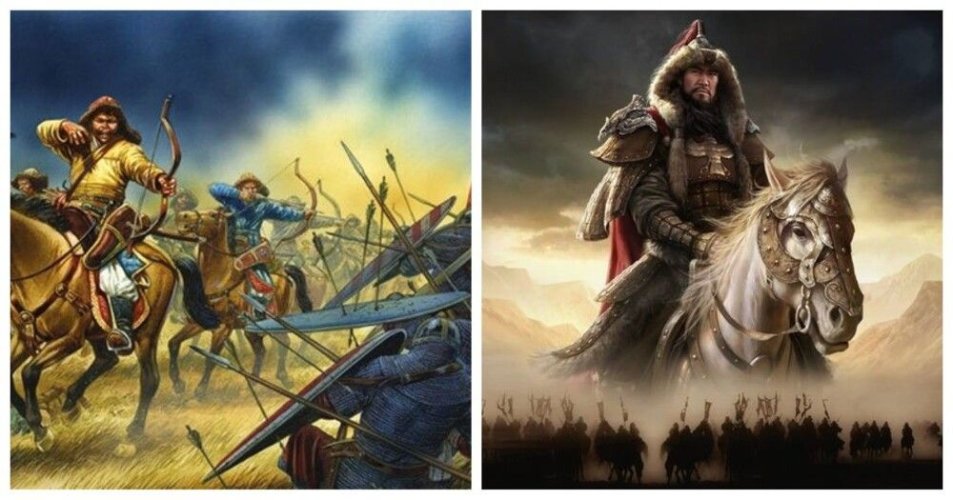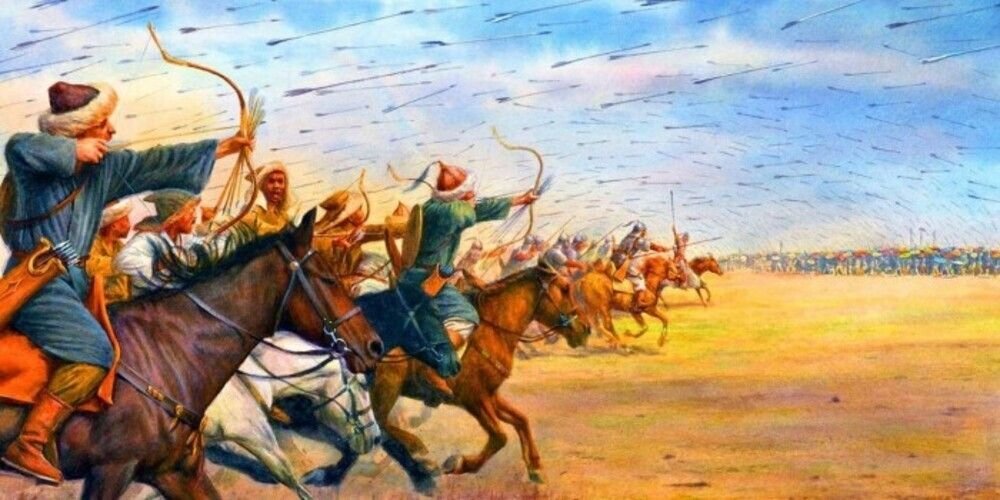
To begin with, the steppe dwellers had a rather harsh life. A difficult climate, rare pastures, temperature changes at different times of the year: from scorching heat to terrible cold with a piercing wind. All this hardened the steppe dwellers from childhood, and any difficulties on the march were not scary for them. The children of nomads learned to ride a horse and walk at the same time. There was no other way to survive then. By the age of three, the boys more or less shot a bow, and by 10 they already mastered this weapon. If you take an average nomad and the best European cavalryman, the steppe dweller surpassed the latter in all respects: he galloped dashingly and hit without missing. Their horses were also a match for them - short, hardy and unpretentious.

The social structure of the nomads also played an important role. They had a tribal system, while their opponents had feudalism. Therefore, while some said "the vassal of my vassal is not my vassal", Genghis Khan built a clear and understandable pyramid of subordination. He became not only a leader, but also the "chief father" of the steppe dwellers. Therefore, his orders were carried out unquestioningly. Compared to other neighbors, the Mongols lagged far behind. At the same time, they were aware of all the technological and military innovations of mighty China or Khorezm. There is even a theory that Europe was so ahead of everyone in development because it is very well located and stretched from east to west. So it was very convenient for Europeans to exchange all sorts of inventions, goods and knowledge with others. And the Mongols lived in a key point for exchange: between the Middle East, India, China and Europe. And they knew very well how their neighbors lived and what they did.
One of the key combat skills of the Mongols was archery. They could shower the enemy with arrows while riding and inflict terrible damage on him. And the weapon itself was brought to perfection. The tension force of their bow was approximately 65-75 kg, and that of European weapons was 35 kg. An ordinary Mongolian warrior fired 12 arrows per minute, and the norm for him was to hit the chosen part of the opponent's body from 30 steps.
Well, the tactics of the Mongols were elementary at first: they showered the enemy with arrows, drew him out for battle, and then ran away. Then they turned around on the gallop and mercilessly shot him with bows. And so on again and again. Here is how the traveler Marco Polo described it: In battles with the enemy they gain the upper hand in this way: running away from the enemy, they are not ashamed, running away, they turn and shoot. They trained their horses, like dogs, to turn in all directions. When they are driven, they fight gloriously on the run, and with the same strength and precision, as if they were standing face to face with the enemy; he runs and turns back, shoots accurately, hits both the enemy's horses and people; and the enemy thinks that they are scattered and defeated, and he himself loses, because his horses are shot, and a fair number of people are killed.
Over time, the Mongols improved their tactics and adopted the best from their defeated enemies. For example, they introduced engineering troops and began to use combat weapons. But the basis of the army was always unrivaled archers. So Genghis Khan did not create anything fundamentally new: he took the best qualities of his fighters, multiplied them by the latest army know-how and reinforced it all with strict discipline. After that, he created a gigantic empire, unprecedented for that time, and went down in history.
